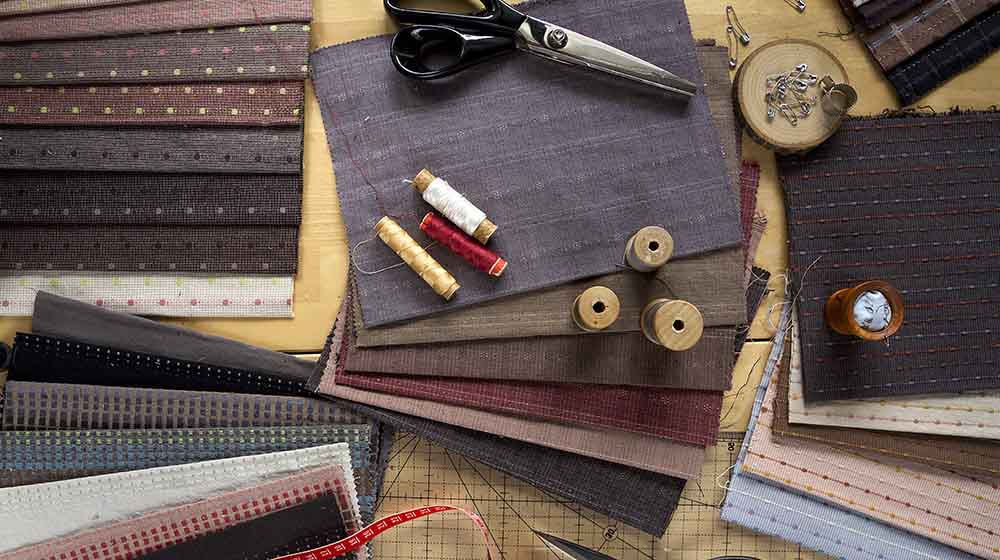Interfacing is an extra layer of fabric that is sewn into your garment. It appears in collars, facings, button plackets, and other spots in the garment that need a bit of support and shaping. Learn all about it as you read on.
In this article:
RELATED: Sewing for Beginners: 25 Must-Learn Basic Sewing Skills
What is Interfacing and When to Use It
Fusible Interfacing
Fusible interfacing has glue on one or two sides that are melted onto your fabric when pressed with an iron. Always use a pressing cloth between your interfacing and iron. Don't forget to do the same as between your fabric and your ironing board to keep the adhesive off those surfaces.
Lightweight Woven Fusible Interfacing
One of the most commonly used weights in garment construction. It is lightweight, so it is ideal for collars and facings. It is also woven, so it is the actual fabric that will not disintegrate with washing and wearing.
Because it is made of woven fabric, you must take the grainline into account when cutting. Think of how you do it with your pattern pieces on the garment fabric. It is available in both white and black for use with light and dark fabrics.
Woven fusible interfacing is also available in medium and heavyweight options. You can use it with heavier fabric or when the extra body is needed.
Knit Fusible Interfacing
Perfect for knit, jersey, and other stretch fabrics. It is a lightweight knit that has some give and stretch. It also comes in both white and black to match your fabric’s color.
Fusible Tape
Often used for ironing hems, this nonwoven tape is fusible on both sides. So it can be placed between two fabrics to fuse them together. The fusible tape is often used for no-sew hems or to create a patch.
RELATED: Know Your Sewing Terms And The Language Of Sewing | Sewing Dictionary
How to Iron Fusible Interfacing
Place a pressing cloth on your ironing board to protect it from the adhesive. Put your fabric on the pressing cloth, the wrong side up. Then move your fusible interfacing onto the fabric, glue-see down.
Place another pressing cloth down on top of your interfacing. This will prevent your iron from sticking to the adhesive. Gently lay it down, careful not to move the pieces underneath out of place.
Use an iron set to the temperature instructed on the instructions. Then place your iron onto your pressing cloth and hold it in place. Use both hands to apply pressure when you move the iron in small circles for about 10 seconds.
Pick up the iron and move to the next section of the interfacing. Again, being careful not to shift the pieces around. Do not move the iron back and forth, simply pick it up and set it back down.
After ironing the entire surface, peel back the pressing cloth and check to make sure the bond is permanent. Otherwise, the interfacing will separate from the fabric as you wash and wear the item.
Sew-In Interfacing
Just like fusible interfacing, sew-in interfacing gives support to garment pieces. But it is sewn into place rather than ironed onto the fabric. This is best used in enclosed areas of construction, like inside a collar, in a men’s tie, or between your fabric and lining.
Hair Canvas
This is often found in jacket and coat tailoring to add stiffness and body. Sew-in interfacing is typically used in collars, cuffs, pocket flaps, and other locations that require extra support.
Belt Interfacing
When making fabric-covered belts, inserting this stiff interfacing helps the inside of the belt hold its shape. Fold the fabric around the belt and cut it into whatever shape you desire.
Lightweight Woven Sew-In Interfacing
Exactly like the lightweight woven fusible version, this consists of lightweight woven cotton fabric. It provides body and strength to areas in garment construction. Think collars, pockets, cuffs, and facings.
Place the pattern pieces with either grain, cross or lengthwise, when cutting out. This is also available in medium and heavy-weight varieties, for when additional strength is needed.
Want to learn more about interfacing? Here's a video by Seamwork:
It can be pretty complicated to absorb all these. But all you need to do is to focus and take it one step at a time. Have fun!
Have you ever used interfacing in any of your projects? Let us know in the comments below!
UP NEXT:
- 29 Basic And Complex Sewing Techniques Sewers Should Master
- Know Your Sewing Terms And The Language Of Sewing | Sewing Dictionary
- 10 DIY Roman Shades – Sewing Tutorials And Ideas
We aim to feature the hottest trends in the sewing world, so get in touch if you can contribute! WRITE FOR US!
Stay connected with us on Facebook, Twitter, Instagram, and Pinterest!
Editor’s Note: This article was originally published 0n February 28, 2018, and has been updated for quality and relevancy.
